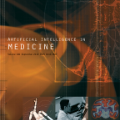Data on neighbourhood characteristics are not typically collected in epidemiological studies. They are however useful in the study of small-area health inequalities. Neighbourhood characteristics are collected in some surveys and could be linked to the data of other studies. We propose to use kriging based on semi-variogram models to predict values at non-observed locations with the aim of constructing bespoke indices of neighbourhood characteristics to be linked to data from epidemiological studies. We perform a simulation study to assess the feasibility of the method as well as a case study using data from the RECORD study. Apart from having enough observed data at small distances to the non-observed locations, a good fitting semi-variogram, a larger range and the absence of nugget effects for the semi-variogram models are factors leading to a higher reliability.
翻译:流行病学研究通常不收集关于邻里特性的数据,但是这些数据对研究小地区保健不平等问题有用,一些调查收集了邻里特性,可以与其他研究的数据联系起来,我们提议使用半变式模型的轮廓预测非观察地点的数值,目的是建立与流行病学研究数据相联系的关于邻里特性的简单指数;我们进行模拟研究,评估该方法的可行性,并利用记录研究的数据进行个案研究;除了在远离非观察地点的地方有足够的观测数据外,还存在一个适合的半变式模型,范围更大,而且半变形模型没有受到叮当效应,这些是导致可靠性提高的因素。



